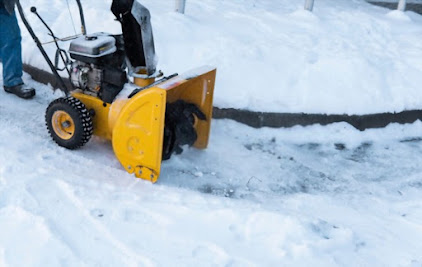3 Ways to prevent ice formation on frozen patches of water
Warmer
winters are on the horizon and while they bring sunshine and warm temperatures,
they also mean that frozen patches of water are often present on the roads. The
salt breaks down the freezing point of water and results in a liquid that is
not as cold as it would be normally. Salt will not help melt ice that is
already frozen, but it will prevent additional ice from forming on the surface
of the water. While the traditional approach to road icing is to use salt,
there are many other ways to prevent ice formation on frozen patches of water.
We are a Snow Removal Company in Edmonton, and we have listed the 3 possible
ways to get rid of snow.
Stack a half slab of concrete above the water source.
The first thing that comes to our mind is a concrete slab built
above the water. This provides a surface on top of the water, where ice tends
to form first. This would reduce the thickness of the ice, and the chances of
it breaking off. You can contact an Ice
Management Company in Edmonton to help you with the process.
Ice tends to form a lot more often on frozen patches of water than
it does on a smooth surface. The reason is that a smooth surface doesn't allow
for ice to form as easily as a rough surface, which can create a lot less
friction between the ice and the water. In order to prevent ice from forming on
your lake, you should try to cover up the ice with a smooth layer of something
that won't alter the temperature of the ice, but will still provide a smooth
surface.
The second way is to use a de-icer.
As
the climate warms, frozen lakes and ponds are starting to melt, which is a good
thing for those that enjoy ice fishing. For those that don't, however, this can be a very bad thing. It
can be a serious problem for those that use a lake as a water source, as the
water will start to freeze solid, leaving a frozen patch in the middle of a
lake. This is not a good thing for those that fish from boats, as they will be
unable to access their fishing holes. With that being said de-icer comes in handy.
De-icer can be found at your local hardware or department store.
They usually come in granulated or liquid
form and are made specifically to melt and prevent ice from forming
on the surface of the water. A de-icer can be used on any body
of water and will help prevent the formation of ice.
Light up the water block with
torches so that it does not become ice.
The
third way is to use a propane torch to melt the ice. It is best used on ice
that is already formed and on a smaller body of water. The torches will help
prevent additional ice from forming on the water, but they will not help melt
the ice that is already there. Water freezes to form ice. The ice can then form
on objects that are in the water, such as boats and docks, and become a
problem. If ice forms on a boat, it can cause the boat to become stuck and
break apart. If ice
forms
on a dock, it can cause the dock to float away. Propane torches can be used to
prevent ice from forming on objects that are already in the water.
We hope this
blog has provided you with some useful information on how to prevent ice
formation on frozen patches of water. We know
that it can be frustrating when you go to take a walk or go for a drive and
there is ice on the road or sidewalk, especially when you have to go out or run
an errand. With these tips, we hope that you will be able to prevent ice from
forming and be able to get where you need to go, whenever you need to get
there! If you have any questions or need more information, please contact us anytime
at Snow Removal
Company Edmonton.


Comments
Post a Comment